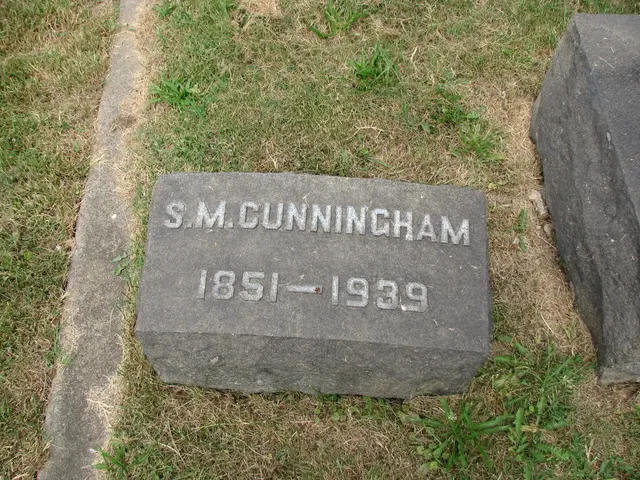Study conducted by the Centre for Chronic Disease Control (CCDC) reveals that two-drug combination therapies are successful in enhancing blood pressure control among Indians.
In a groundbreaking study, the Centre for Chronic Disease Control (CCDC) New Delhi, AIIMS New Delhi, and Imperial College London have found that three two-drug combination therapies are equally effective and safe in lowering blood pressure in South Asians with uncontrolled hypertension.
The TOPSPIN study, involving 1,981 patients across 32 hospitals in India, aimed to address a significant public health crisis. Hypertension affects over one billion adults worldwide, including over 300 million living in India.
The study, which was published in the prestigious journal Nature Medicine, examined three two-drug combination therapies: Amlodipine plus Perindopril, Amlodipine plus Indapamide, and Perindopril plus Indapamide.
The findings showed that all three combinations were equally effective in lowering both ambulatory and office blood pressure. After six months, blood pressure dropped significantly by around 14/8 mmHg when measured over 24 hours and about 30/14 mmHg in clinic settings.
Prof. Ambuj Roy, Professor of Cardiology at AIIMS Delhi, noted that nearly 70% of patients reached the recommended blood pressure target below 140/90 mmHg, a rate around five times higher than India's current average control rate.
The study's secondary outcomes, such as daytime and nighttime blood pressure control and tolerability, were similar across the three regimens. Moreover, the pills were well-tolerated, with less than 3% of patients reporting side effects serious enough to stop treatment.
Prof. Dorairaj Prabhakaran, the Executive Director of CCDC and a lead author, emphasized the study's implications. He suggested that a single daily pill with two drugs could be a simple and powerful method for managing blood pressure in Indian and South Asian patients.
The TOPSPIN study is particularly significant because it is the first randomized trial investigating first-line two-drug single-pill combinations specifically in South Asians. Previous trials often excluded this population, leaving a key knowledge gap.
Prof. Neil Poulter, a Professor at Imperial College London, highlighted the importance of studying how medicines work in different populations. He pointed out that earlier research in Africa showed different results, underscoring the need for understanding how medicines work in various populations.
These findings could potentially improve treatment not only in India but also for South Asians living around the world. Prof. Prabhakaran suggested that if added to India's list of essential medicines, these pills could greatly improve blood pressure control in the country.
Innovative solutions are needed to curb the growing tide of high blood pressure, which is the single highest risk factor for global deaths. The TOPSPIN study gives strong evidence on what works best in South Asians, offering a promising step towards addressing this global crisis.
- This study's findings could have implications for health-and-wellness and sleep patterns in individuals with uncontrolled hypertension.
- The study's results could possibly influence the workplace-wellness efforts of various companies, promoting better management of medical-conditions like chronic-diseases and hypertension.
- The discovery of effective drug combinations could contribute to addressing the rise in cases of cancer, respiratory-conditions, and digestive-health issues, often associated with untreated hypertension.
- Eye-health could potentially benefit from better blood pressure control, as high blood pressure increases the risk of eye damage.
- Considering hearing loss can be a side effect of some medications, the well-tolerated two-drug combinations in this study could contribute to better hearing health.
- The health-and-wellness sector might embrace these findings as a means to innovate therapies-and-treatments, improving nutritional recommendations for patients with hypertension.
- As people age, they become more susceptible to chronic diseases, including heart disease, diabetes, and kidney failure, all of which are linked to hypertension. Better management of blood pressure through these new therapies could help mitigate the effects of aging.
- Womens-health could specifically benefit from better blood pressure control, considering that hypertension is a factor in pregnancy complications.
- Proper blood pressure management through these therapies could also have an impact on parenting, as it lowers the risk of complications during pregnancy and childbirth.
- Weight-management efforts could potentially see improvements as better control of hypertension reduces the risk of obesity-related health problems.
- Cardiovascular-health could significantly improve with the implementation of these new treatments, as they lower the risk of heart attacks and strokes.
- The study's findings could have far-reaching implications for our understanding of medical-conditions, especially those related to autoimmune-disorders, neurological-disorders, and climate-change.
- As the study involved many South Asian participants, the results could offer insight into the specific health needs of this ethnic group, potentially leading to more tailored treatments in the medical-industry.
- The manufacturing sector could play a role in the production and distribution of these new, cost-effective medications, especially if they become essential medicines in India.
- The mental-health of those affected by hypertension could also see improvements as better management of this condition decreases stress and anxiety levels.
- This study's results resonate with the importance of mens-health, as hypertension affects men more than women and is a leading cause of death among men globally.
- Skin-care routines might require adjustments for those taking these new medications, as some drugs can cause skin conditions.
- Innovation in therapies-and-treatments could further be expanded through research in environmental-science, as understanding the effects of medicines on the environment is essential in ensuring their safety.
- Finance could potentially play a part in making these medications accessible to all, considering the costs associated with prescription drugs.
- Energy-efficient solutions could be integral in implementing these therapies worldwide, ensuring they reach people living in remote areas or underdeveloped regions.
- Retail pharmacies could play a key role in disseminating information about these new treatments and helping patients access them easily.
- Public-transit systems could also serve a significant role in making healthcare services more accessible for those managing hypertension.
- Entrepreneurship could be fostered through the development of new startups focusing on these therapies and other health-and-wellness solutions.
- Transportation infrastructure might require improvements to accommodate the growing demand for more efficient and accessible healthcare services.
- Strong leadership is crucial in implementing the study's findings, ensuring they are adopted effectively within the industry.
- Diversity-and-inclusion in healthcare research is essential, as the TOPSPIN study demonstrates the importance of catering to various populations' unique needs.
- The automotive industry could potentially adapt to accommodate those managing hypertension, offering safer vehicles or designed for easier access.
- Small-business owners might find opportunities in investing in ventures focused on addressing the global crisis of high blood pressure or improving other areas of health-and-wellness.








